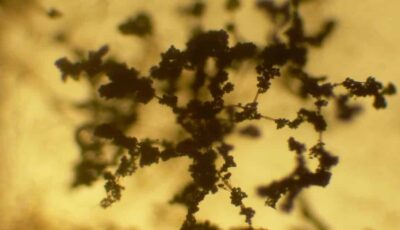1 Biology and Taxonomy
Trichoderma are free-living soilborne fungi which are highly interactive in the rhizosphere and foliar environments. Trichoderma are known as imperfect fungi but now their perfect stage (Hypocrea) is known. It is a fast growing fungus in culture, and produces numerous green spores and chlamydospores. Trichoderma have created eco-friendly, safe and nonchemical disease management system which have great importance in organic agriculture. Trichoderma, a soilborne mycoparasitic fungus is effective against many soil borne phytopathogens ( Rajkonda et al. 2011, Dolatabadi et al. 2012).

Trichoderma spp. are also considered cellulolytic ascomycetes and among the organisms responsible for the destruction of cellulosic fabrics (Elsas et al, 1997). Rifai (1969) distinguished nine species differentiated primarily by conidiophore branching patterns and conidium morphology based on microscopic characters, including T. harzianum, T. viride, T. koningii, T. hamatum, T. longibrachiatum, T. pilulifrum, T. polyporum, T.aureoviride and T. pseudokoningii.
Most Trichoderma strains have no sexual stage but instead produce only asexual spores. However, for a few strains the sexual stage is known, but not among strains that have usually been considered for biocontrol purposes.
The sexual stage, when found, is within the Ascomycetes in the genus Hypocrea. Traditional taxonomy was based upon differences in morphology, primarily of the asexual sporulation apparatus, but more molecular approaches are now being used. Consequently, the taxa recently have gone from nine to at least thirty-three species (Yedidia, et.al. 1999).
Kingdom: Fungi
Division: Ascomycota
Subdivision: Pezizomycotina
Class: Sordariomycetes
Order: Hypocreales
Family: Hypocreaceae
Genus: Trichoderma
Species: T. harzianum
2 Ecology
Trichoderma spp. is widely distributed all over the world (Domsch et al., 1980) and occurs in nearly all soils and other natural habitats, especially in those containing organic matter (Papavizas et al., 1984). Trichoderma spp. seems to be a secondary colonizer due to frequent isolation from well decomposed organic matter (Danielson and Davey, 1973). Trichoderma spp. is also found on root surfaces of various plants (Davet, 1979), on decaying bark, especially when it is damaged by other fungi, and on sclerotia or other propagules of other fungi (Davet, 1979). The abundance of Trichoderma spp. in various soils coupled with their ability to degrade various organic substrates in soil, their metabolic versatility, and their resistance to microbial inhibitors, suggests that they may possess the ability to survive in many ecological niches depending on prevailing conditions and the species or strain involved. Some of the conidia of T. harzianum added to soil without nutrient– supplying amendments survived between 110 and 130 days, but the length of survival depended on the isolate used (Papaviza, 1981; Papaviza et al., 1982). Most of the conidia probably lysed without first germination, or they germinated in response to some nutrients released from organic matter and subsequently lysed in the absence of food bases adequate enough to sustain further growth and sporulation. Hyphae also have the ability to survive in soil (Papavizas et al., 1984). Lewis and Papavizas (1984) demonstrated the potential of various Trichoderma species aggregates to form chlamydospores readily and in great numbers in natural soil or in fragments of organic matter after the introduction of the fungus to the soil as conidia. Acidic pH levels enhance in vitro growth of T. harzianum and stimulate its chlamydospores formation and conidial germination (Chet and Baker, 1980). In addition, soil moisture enhances the Trichoderma conidia to survive longer than in dry soil (Lui and Baker, 1980). In addition, Trichoderma can tolerate fungicides, such as methyl bromide, captan and maneb (Rupple et al., 1983).






Pingback: Trichoderma harzianum, the bioagent - agronomy